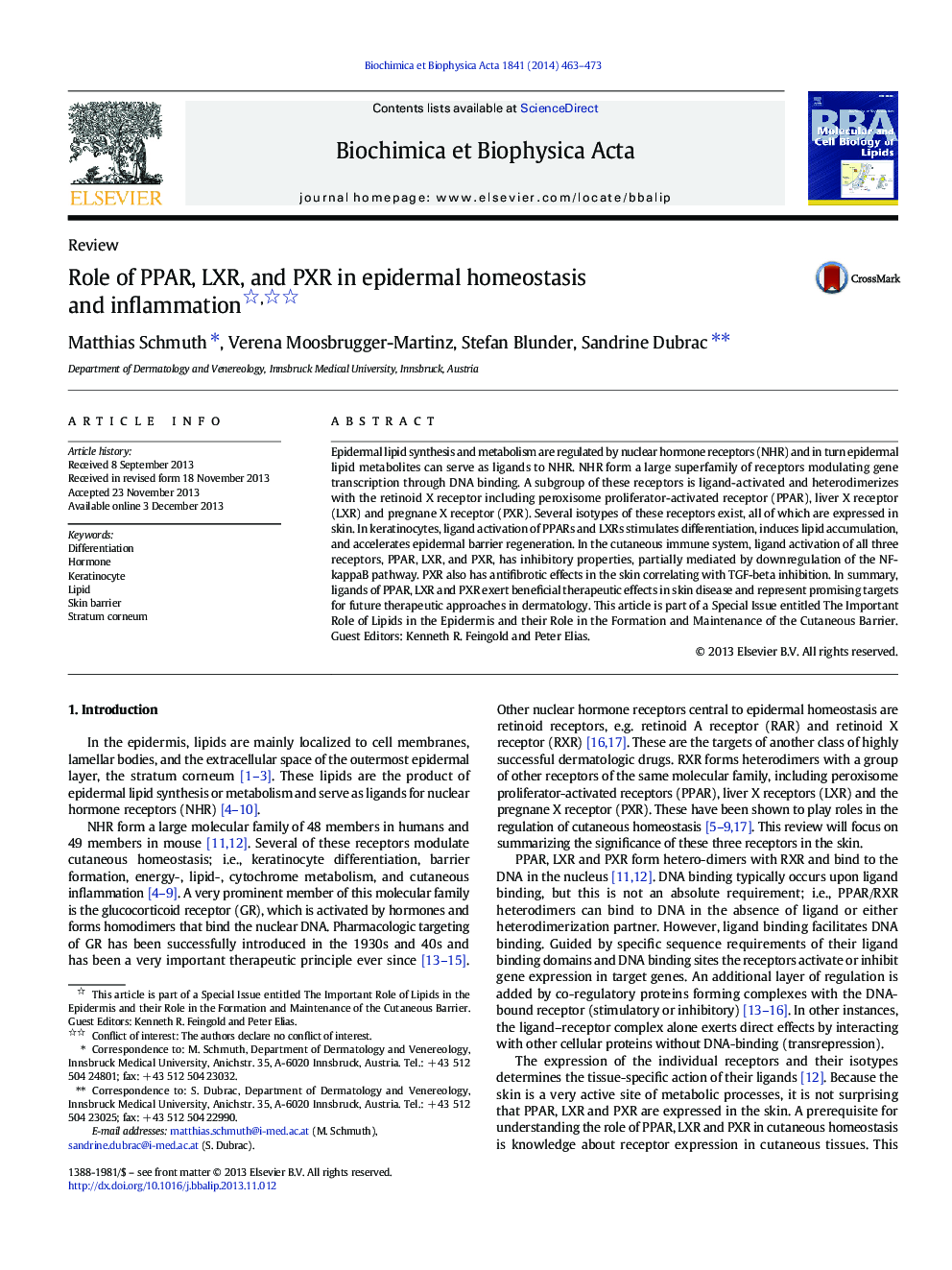| Article ID | Journal | Published Year | Pages | File Type |
|---|---|---|---|---|
| 1949204 | Biochimica et Biophysica Acta (BBA) - Molecular and Cell Biology of Lipids | 2014 | 11 Pages |
•PPAR, LXR and PXR are nuclear hormone receptors that heterodimerize with RXR.•In keratinocytes, they stimulate differentiation and improve barrier function.•They also have anti-inflammatory properties in skin.
Epidermal lipid synthesis and metabolism are regulated by nuclear hormone receptors (NHR) and in turn epidermal lipid metabolites can serve as ligands to NHR. NHR form a large superfamily of receptors modulating gene transcription through DNA binding. A subgroup of these receptors is ligand-activated and heterodimerizes with the retinoid X receptor including peroxisome proliferator-activated receptor (PPAR), liver X receptor (LXR) and pregnane X receptor (PXR). Several isotypes of these receptors exist, all of which are expressed in skin. In keratinocytes, ligand activation of PPARs and LXRs stimulates differentiation, induces lipid accumulation, and accelerates epidermal barrier regeneration. In the cutaneous immune system, ligand activation of all three receptors, PPAR, LXR, and PXR, has inhibitory properties, partially mediated by downregulation of the NF-kappaB pathway. PXR also has antifibrotic effects in the skin correlating with TGF-beta inhibition. In summary, ligands of PPAR, LXR and PXR exert beneficial therapeutic effects in skin disease and represent promising targets for future therapeutic approaches in dermatology. This article is part of a Special Issue entitled The Important Role of Lipids in the Epidermis and their Role in the Formation and Maintenance of the Cutaneous Barrier. Guest Editors: Kenneth R. Feingold and Peter Elias.
